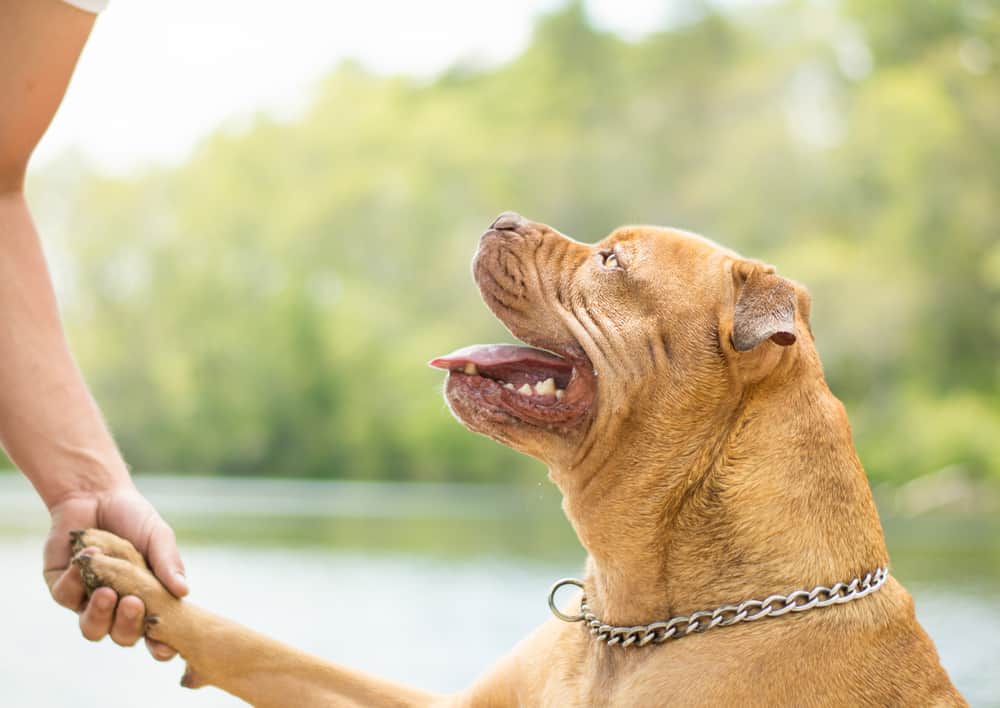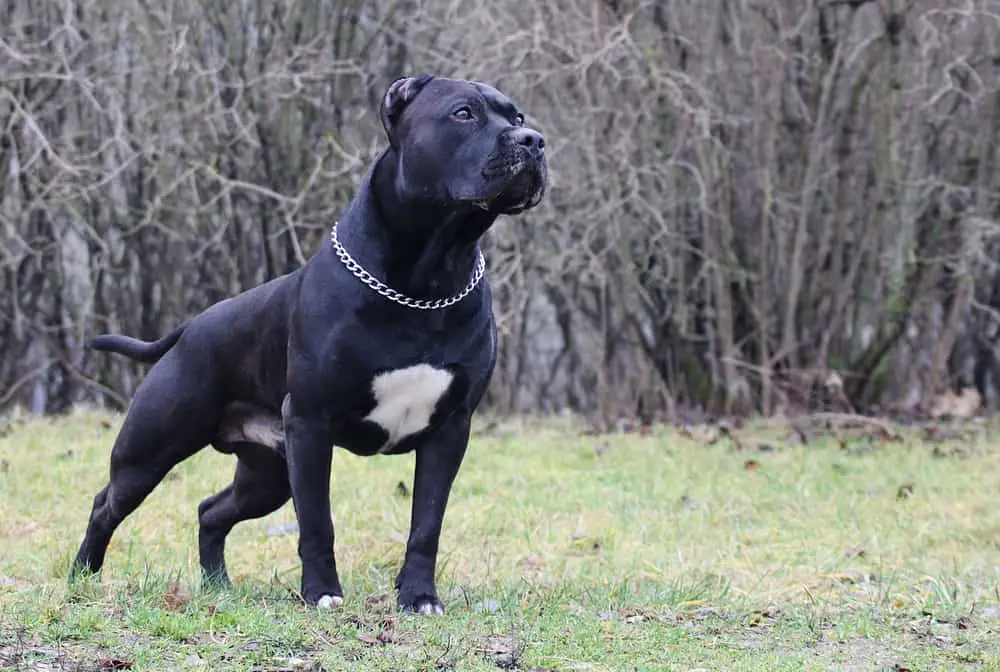A simple walk in the park can easily turn into a very entertaining adventure when walking a Pitbull. They are ultra curious and playful, and often I have seen a Pittie assume the classic “Point” pose when it sees a bird in a tree. This behavior got me wondering if all Pitbulls point, and where the trait comes from.
Pitbulls are descendent of Terriers and Old English Bull Dogs, a breed developed for bull and bear-baiting. The terrier genes inspire hunting vermin, foxes, and rabbits. Pitbulls often “point” when on the scent of prey, but it is not a trait enhanced through breeding, as it is in Pointing gundogs.
Although all dogs can point, and their predatory instincts drive them to freeze when they are stalking or hunting something, it doesn’t necessarily mean they have pointing genes in their DNA. Pitbulls have a few characteristics from their hunting ancestors that could be responsible for their high prey drive.
What Exactly Is A Pitbull?
A Pitbull is a general term used for a dog descended from Old English Bulldogs and Black and Tan Terriers, initially called bull-and-terriers. Breeds that look similar and are from similar ancestral lines will be grouped under the Pitbull label. The American Pitbull Terrier is usually the breed associated with the name Pitbull.
There are four recognized dog breeds of the Pitbull-type:
- American Pitbull Terrier
- American Staffordshire Bull Terrier
- Staffordshire Bull Terrier
- American Bulldog
The unfortunate history of the bull-and-terrier is the terrible reason they were bred for the bloodsports of dogfighting and bull or bear-baiting. The crossbreeding of the Terrier and the Bulldog in the early 19th century in the United Kingdom resulted in a fearless and strong dog. These early Pitbulls were animal gladiators savagely pitted against fierce animals and each other for the sole purpose of human entertainment.
Once the inhumane bloodsport was declared illegal, breeders wanted to produce a leaner, quicker, more agile working dog that retained the strength and tenacity of the Bulldog and the game of the Terrier. The result was rather successful, as the breeds under the Pitbull umbrella are sturdy, athletic, eager to please, and hardworking.
History of Pit Bulls in Sports
The Terrier DNA in the Pit Bull is responsible for the breed’s need to dig and chase. The name “terrier”is a French word that means “burrow,”and that is what bored Pit Bull Terriers do. Terriers are specialist vermin-hunters, and they often accompanied horse-mounted hunters on rabbit and fox hunts, where they would dig into dens and burrows to chase animals out for the hunters.
The modern Pit Bulls are a family of energetic and athletic dogs that are highly in tune with their humans and are intelligent enough to learn commands quickly. They have all the traits required to excel in dog agility, jumping sports, and weight pulling. They have high energy levels, and they love to please their owners while burning some of it off through disciplined “playtime.”
Dog Breeds That Point
All dogs have survival instincts and prey drive traits that are displayed when they see an animal that would have been food for their ancestors. But some dogs are naturally inclined to particular behaviors that others are not. Pointing dogs are specially bred to boost the instinct of finding prey and waiting for further commands from their hunter teammate before reacting to the animal.
When a Pointer dog finds a bird, he will lean in, raise one front paw, and straighten his tail, then he “locks up” and holds the “point” pose. The hunter watches the dog for any other signs he might show, like moving his tail if the bird is moving, and then walks in to chase the bird out to shoot. Pointing dogs are very smart and can be trained to retrieve downed birds, but this is not their area of expertise.
Breeds of Pointing Dogs:
- American Brittany
- Bracco Italiano
- Braques Francais
- Cesky Fousek
- Deutsch-Drahthaar
- Deutsch-Kurzhaar
- English Pointer
- English Setter
- French Brittany
- German Shorthaired Pointer
- Gordon Setter
- Irish Setters (Red, and the Red and White)
- Llewellin Setter
- Munsterlander (Small and Large)
- Picardy Spaniel
- Pudelpointer
- Vizsla
- Weimaraner
- Wirehaired Vizsla
- Wirehaired Pointing Griffon

Pit Bulls as Pets
Pit Bull Terriers make wonderfully playful and lovable pets. You can train Pit Bulls to be obedient and loyal companions, but it takes consistency and patience. Although they have a vicious reputation and make up a high percentage of dogs in shelters, there is a strong case for Nature versus Nurture, and they are anything but vicious if they are properly raised.
The breed was initially trained never to harm their human handlers, and that trait is still prominent today. Pit Bulls and all Power Breeds require a knowledgeable owner who will enforce constant discipline, exercise, training and make the dog part of the family. If neglected, they will rely on all their natural defenses to look after themselves, which is when they could become dangerous.
Pit Bulls need a lot of exercise and attention to keep their boredom low and discipline in check. They make great family dogs and want to be submerged in their human pack more than anything else.
Conclusion
All dogs have similar instinctual behaviors, but some breeds have been more selectively bred for particular characteristics required for different sports or past times. Bird or gun dogs are bred for their extraordinary sense of smell, prey drive, retrieving, and pointing skills.
Pit Bulls are bred for their strength, tenacity, agility, and companions. It is rather common to have a Pittie that will point at birds or lizards, but it is not something they will do without fail, and it is not a behavior that they are renowned for.
References
- https://en.wikipedia.org/wiki/Pit_bull
- https://www.rover.com/blog/important-pit-bull-facts/
- https://www.akc.org/expert-advice/training/why-is-my-dog-raising-a-paw-and-pointing/
- https://en.wikipedia.org/wiki/American_Pit_Bull_Terrier
- https://www.collinsdictionary.com/dictionary/english-french/terrier
- https://www.pheasantsforever.org/hunt/bird-dog-breeds.aspx

